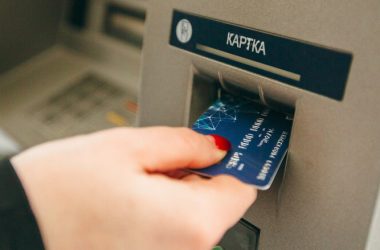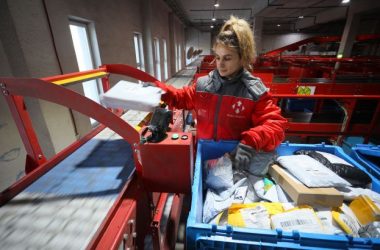This year, there is a decrease in the share of IT specialists who regularly transfer funds to support the Armed Forces of Ukraine. If last year 81% of specialists actively supported the army, this year their share decreased to 75%. Despite this, the average size of the donation remained unchanged and is $188 per month. This is stated in the DOU survey report.
The survey covered 12,974 respondents, of which 11,037 are in Ukraine, and 1,937 are abroad. The donation amounts in the survey are indicative, as the respondents provided approximate estimates of their contributions.
In the summer of 2024, 75% of surveyed IT specialists indicated that they regularly support the needs of the Defense Forces of Ukraine. This is a little less than in previous years: in 2023 there were 81% of them, and in 2022 – 82%.
IT specialists who live abroad and plan to return are the most active supporters of ZSU — 81% of them make regular contributions. In Ukraine, this indicator is 77%, and among those who do not plan to return, it is only 62%. The share of donors among those who plan to return remained at 81%, while among those who did not plan to return, it decreased from 69% to 62%.
Changes in willingness to donate are observed among different groups of IT professionals. Among those who plan to emigrate, the share of donors decreased from 70% in 2023 to 65% in 2024, while among those who plan to stay in Ukraine, it remained at 80%.
There is also a decrease in the share of donors among experienced professionals: juniors (from 72% to 69%), seniors (from 80% to 72%) and leaders (from 80% to 74%). However, the share of donors among interns increased from 62% to 64%.
Among technical specialists, support decreased from 81% in 2023 to 77% in 2024, and among developers this figure is the lowest at 74%. Among non-technical specialists, the share of donors remained almost unchanged — 80% in 2024 compared to 81% in 2023.
Among men, the share of donors decreased from 80% to 74%, while among women it decreased less – from 82% to 80%. The most active donors are specialists aged 25 to 35 (77%), which is more than among younger people (72 %) and older (74%) categories. Overall, across all age groups, support for the military decreased compared to last year.
It is noted that the financial situation is not a decisive factor for the willingness of IT specialists to donate. Regardless of income level, most Haitians support the military, although those who earn less than $1,000 or spend more than they earn are slightly less likely to do so.
However, among those earning more than $1,000, there is currently no significant difference in willingness to donate.
The average size of donations remained stable, but the share of those donating more than $1,000 decreased
The average monthly donation remained roughly the same as last year, at $188 compared to $190. The most significant change occurred among specialists who do not plan to return to Ukraine: their median donation decreased from $225 to $183.
Average relative indicators have slightly decreased: if last year donors donated 8% of their salary, this year – 7%. Those who are in Ukraine, on average, transfer 8% of their salary (last year — 10%), and those who are abroad and plan to return — 5% (last year — 7%).
Specialists who plan to return to Ukraine from abroad transfer the largest sums — $233 or 5% of income, IT workers who do not plan to leave — $225 or 10%, and those who currently have no plans to move — $200 dollars or 10%.
Juniors and interns continue to transfer 5% of their income, and seniors, leads, architects and managers – 10%. Middles have reduced their contribution from 7% last year to 5% this year. The median donation for seniors has dropped significantly, from $348 to $300, which may be due to fewer or even fewer pay raises.
Top-level technical professionals, such as service technicians, engineering team leaders, and program directors, remain the biggest donors, donating an average of 10% of their income, which equates to $650 a month.
Haitians with higher incomes usually transfer a larger share of their income to military needs. Professionals with an income of $4,000 or more give an average of 10% of their salary, with an income of $2,000 to $4,000 – 6-8%, and the rest – 5%. This trend is especially noticeable among donors from Ukraine. Specialists abroad usually contribute about 5%, regardless of their income.
Most often, Haitians donate between $100 and $300 per month, although individual donations can vary greatly. 15% of donors donate up to $50 per month, while 8% donate over $1,000
Donate by place of residence
Among specialists in Ukraine, the largest donations come from the citizens of Kyiv in Kyiv: 78% of them regularly transfer 10% of their income, which is $215. Although the share of donors in the capital decreased from 83% to 78% over the year, the median donation size increased by $15.
The second largest median donation is Lviv, where experts transfer an average of $185. At the same time, how
and in Kyiv, there was a decrease: the median donation size in Lviv decreased from 10% to 8% (or by $15).
Among expats, the largest share of donors is shown by Haitians who moved to Portugal: 75% of them donate an average of 10% of their income every month, which is $280. A similar median donation is seen among US-based professionals ($285), but only 59% of them contribute regularly, donating 5% of their income.
A high share of donors is also recorded among those living in the Czech Republic (85%) and Spain (74%).
The most popular directions of donations among Ukrainian citizens of Aitiv
This year’s research showed that Ukrainians often transfer funds directly to friends and relatives who serve in the Defense Forces, as well as to support small volunteer initiatives. It turned out that 66% of donors do not have a clearly defined budget for donations, and the amount of their contributions can change from month to month. Also, 21% of Haitians transfer funds after receiving a salary, while 17% try to distribute donations evenly throughout the month.
When choosing the direction of donations, most donors prefer to support small gatherings and initiatives (44%), and also have a permanent list of foundations and volunteers that they regularly help (38%). Only about 27% of donors support large gatherings and special projects. Subscription to regular donations is a rare practice among Ukrainian citizens of Aitiv, it is used by only 14%.
Among the funds, the most popular is “Return Alive”, which is supported by 50% of the citizens of Haiti. The Serhiy Prytula and Serhiy Sternenko foundations occupy the second and third places in terms of the number of donors — 35% and 34%, respectively.
In terms of donation goals, 66% of donors are willing to support drone and “wing” fees, 48% for military vehicles, and 42% for REE and EPR equipment. The needs of specific departments (51%) and interesting special projects from foundations and volunteers (41%) are also popular directions.
“Treatment and rehabilitation of the military, tactical medicine, as well as training and personal protection, uniforms for the military are currently among the least attractive fees: a quarter and less than a quarter of Haitians are willing to pay for them,” the survey says.








